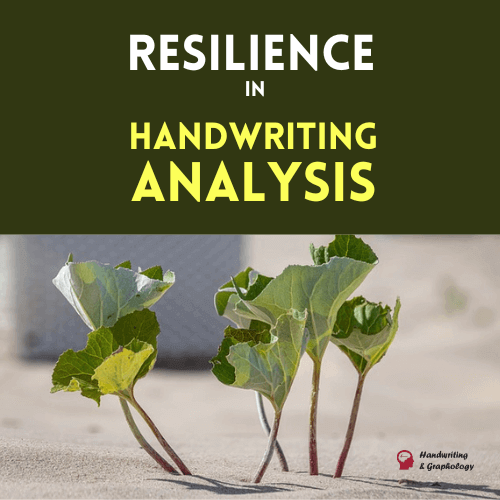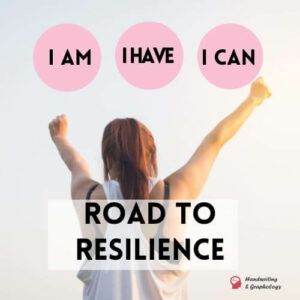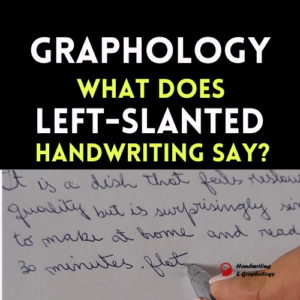Graphology and Resilience
Discover Resilience through Graphological Analysis. What is what makes people adjust to adversities and get over them? What makes us face hard facts and carrying on?
What is Resilience?
The term “resilience” comes from Latin “resilio” which means bouncing, reemerging. From the field of Physics: the ability materials have to get back to their original shape after they have been deformed due to the presence of an outer impact.
There are circumstances that change our lives or the life project we someday sketched. There are people who have to go through catastrophes, terminal diseases, and traumatic facts during childhood. Despite that, they manage to develop as mature individuals, adjust to society and display their abilities.
We ask ourselves, how do they do that? If you ever had to go through mourning, lose a job, breake up with your partner, where do we get the strength from at the right time?
Here we describe what resilience is and where to find it in writing.
What is a Resilient Person?
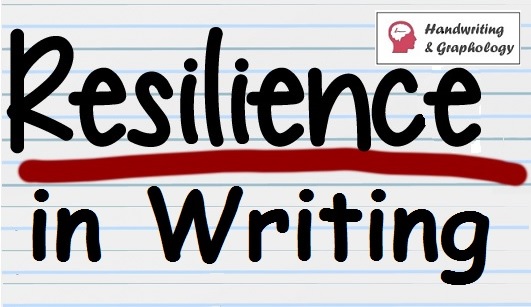
The resilient person, faces a problem and adjusts to the situation. He gives himself the chance of discovering a deep wealth in his being, coming out strong due to contact with talents that so far had been unknown.
It is the ability to face adverse situations and conflicts in a constructive way. It is a creative ability, which allows people living a more productive life. When critical situations arise, sometimes we tend to block or anaesthetize the contact with “the wound” The resilient person, on the contrary, does not go back to original state prior to the critical event. He does not deny facts nor does he say “nothing has happened here”. Quite on the contrary, he does not interrupt the evolutionary process. He develops a talent that allows going through crisis, which activates a potential until that latent moment.
What is Resilience Theory
Investigations demonstrate that resilience is not something extraordinary, but it is a common characteristic to all individuals, which is possible to develop through specific strategies. Specialists in resilience coincide in not presenting it as a special attribute from exceptional individuals. It is a specific function in the psyche in order to adopt a healthy attitude when we are forced to “deform” due to external circumstances.
The truth is that resilient people experiment most of the problems that non-resilient people go through. The main difference is the quickness with which they recover from failures in their lives. Being resilient does not impede suffering or anguish. It is natural that before painful situations, the emotional state is affected. Resilience is not a characteristic that we either have or not have, but that is included in the way of thinking, behavior and actions.
Resilience is Learned: How to Be a Resilient Person
Some individuals seem to be more resistant than others, but resilience is a dynamic trait, not a permanent ability. Resilient individuals show the dynamic auto-renovation, when less flexible individuals are worn out and negatively affected by stressing factors.
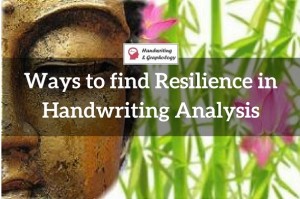
Pillars of Resilience: Protective Factors of the Human Being
There are protective factors for human beings. We must try to stimulate them once detected.
- Self-esteem, trust. It is the base of the rest of the pillars. Resilient individuals trust their abilities. Being conscious of their potential and limitations allow them to determine their goals and feel sure of achieving them. Nevertheless, they recognize the importance of teamwork. They don’t confine themselves. They know, when to ask for help.
- Introspection. It is the art of asking yourself and answering honestly. It depends on the solidness of the self-esteem that is developed from others´ recognition.
- Independence. Being able to set limits between yourself and the conflicting medium. Ability to keep emotional and physical distance without falling into isolation. (In cases of abuse, this ability is very much affected).
- Ability to relate to others. Ability to establish laces and intimacy with other people, to equilibrate the own need of affection with the attitude of making ourselves available to others and social support. When resilient people go through a potentially traumatic event, their first goal is getting over it. They are conscious of the importance of social support. And they do not hesitate in seeking professional help.
- Initiative and tenacity. They are tenacious in their purposes. They are flexible but they do not give up their goals. They persist. The difference is that they do not fight against windmills. They take advantage of the current and they flow with it.
- Humor. They find the funny side in the tragedy itself. They face adversity with humor. One of the essential characteristics is the sense of humor that contributes to stay optimistic and allows us to focus in the positive aspects.
- Creativity. It is the ability of creating order and beauty out of the painful experience. It is the fruit of ability for reflection. He is not limited to fixing the broken jar, and is conscious that he will never be the same. The resilient individual will make a beautiful mosaic out of the broken pieces.
Building your Resilience
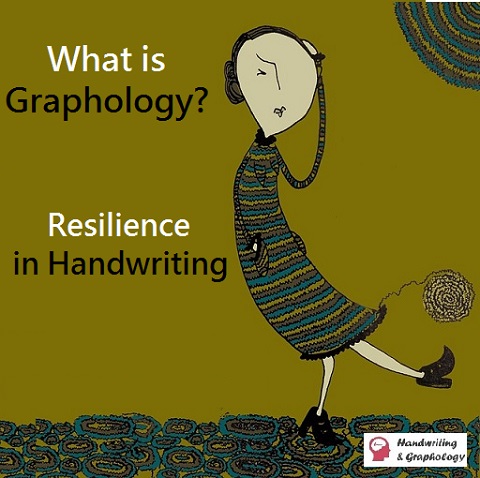
- They do not try to control situations. One of the main sources of tension and stress is the desire for controlling all aspects of our life. That is why, when something gets away from our hands we feel guilty and insecure. However, resilient individuals know that it is impossible to control all situations. They have learned to deal with uncertainty and feel comfortable even if they do not have the control.
- Flexibility before change. Even though resilient individuals have a very clear self-image and know perfectly what they want to achieve, they also have enough flexibility to adjust their plans and change their goals when necessary. These people are not reluctant to change and are always willing to evaluate different alternatives, without holding on obsessively to the initial plans or to a single solution.
- Ethics. Ability to commit to own values and good behavior towards others. Resilient individuals understand that personal desire must extend to common well-being of the rest of the fellow men.
- Ability for critical sense (potential and limitations): It is the fruit of combinations of others. Self-knowledge is a powerful tool at the moment of facing adversities and challenges. Resilient people know how to use it on their own advantage, they know their main strengths and abilities, as well as their limitations and defects. This way they can set more objective goals that do not only take their own needs and desires into account, but also the resources they count on in order to achieve them.
The Road to Resilience: How to keep Resilience
In 1995, Edith Grotberg developed a descriptive model based on resilience. This model considers resilience with a dynamic character, which allows working in order to potentiate and reinforce the same.
It is based on these resilient expressions:
- I have: Social, material and concrete support. I have people I can trust who support me unconditionally.
- I am: Inner strength, psychological strength, others admire me and respect me. I am will power, I am willing to “do”, I am responsible for my actions.
- I can: Personal skills to resolve conflicts, find the right time to talk or act.
How to get Resilience
- Establishing bonds and connections.
- Looking for opportunities for self-discovering.
- Avoiding seeing crisis as problems we cannot get over.
- Accepting that change is part of life.
- Moving towards objectives in a realistic way.
- Acting decisively towards adversity.
- Feeding a positive vision of yourself.
- Maintaining a perspective of situations.
- Hopeful vision of things.
- Taking care of yourself
Examples of Personal Resilience in Handwriting
Characteristics of Resilient People in Handwriting
The handwriting of individuals with resilient abilities has the following characteristics:
- Evolved handwriting: It has been modified along the years and life experience.
- Shape: Mixed or curved handwriting: Flexible, with ability for adaptation before changes in life.
- Regular writing: Equilibrated personality. Controls impulses and emotions.
- Fluid, progressive, spontaneous, dynamic, harmonic handwriting: It denotes openness to change, without rigidity, driven by a fluid enthusiasm towards the future. Predominance of activity, energy, ability for reaction and decisive skills before conflicts.
- Extended writing: It means easiness to relate, projecting towards the future, self-confidence.
- Slant: Vertical handwriting, vibrating, moderately slanted towards the right. It indicates initiative, moves towards the future.
- Steady pressure: Self-confidence and security in his own resources.
- Continuity: Grouped or connected handwriting: It indicates that there is persistence and determination in the goals that have been set. Does not get discouraged before adversity.
- Direction: Horizontal handwriting with a certain degree of flexibility, slightly ascending. It indicates optimism, enthusiasm and ability for adjustment to situations.
This concludes the article about Resilience in Handwriting Analysis. Feel free to share it with your contacts if you found it useful.

Keep reading this blog to learn more about Graphology Definition and Meaning of Sizes in Graphology and follow us on Facebook.
Read also: What the slant of handwriting reveals?

